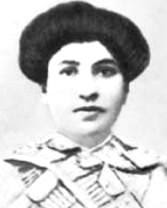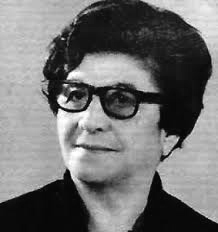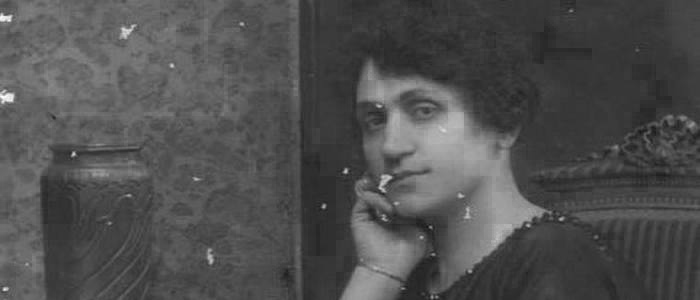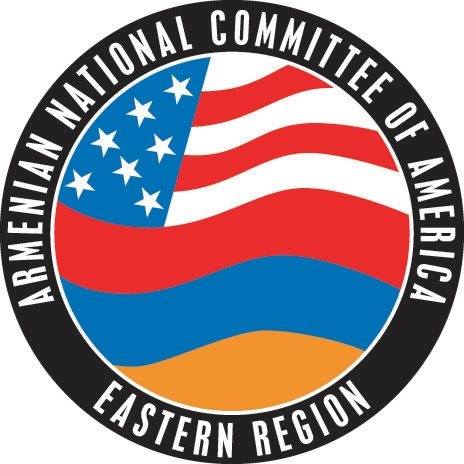The term fedayee, derived from the Arabic word fedayeen that literally means “those who sacrifice,” perfectly describes the civilian men and women who voluntarily left their families and lives behind to form self-defense units in response to the pillage and murder of Armenians at the hands of Turkish forces, Kurdish gangs and the Hamidian guards during what is often referred to as the Hamidian massacres and later during the struggle for independence of the First Republic of Armenia. It was during this time and under the reign of Abdul Hamid II in the late 19th and early 20th centuries that the fedayees fought to gain autonomy, independence and fend off the oppressors, namely the Ottoman Turks; the struggle continued until the establishment of the First Republic of Armenia.
The fedayees were the true backbone of the Armenian nation as they numbered in the thousands and led the national movement. They were instrumental throughout the Hamidian Massacres (1894-1896), Sasun Resistance (1894), Zeitun Rebellion (1895–1896) and the Defense of Van and Khanasor Expedition (1897) as well as the battalions that they heroically fought and won that resulted in an independent Armenia in 1918.
For decades we’ve heard stories of famous fedayees—Arabo, Aghbiur Serop, Andranik and Kevork Chavoush to name a few. Lesser known, however, are the brave women who joined these men and thousands of others in the fight to safeguard Armenian civilians and their villages.
Today, we celebrate five notable fedayee women—“Armenouhi” Khanum Ketenjian, “Lola” Hripsime Metsadurian Sassouni, Mariam Chilingirian, “Roubina” Sophie Areshian-Ohanjanian and “Sosse Mayrig” Vartanian.
These five female fedayees represent the power of the Armenian nation and the Armenian woman. Their stories—equal parts heroic and tragic—must not be lost.

“Armenouhi” Khanum Ketenjian was the daughter of a wealthy Armenian family and graduate of Euphrates College in Kharpert. She served as a Women’s Unit Commander in the Urfa Resistance in 1915 during World War I—a pivotal time in which the Armenian resistance had decided to fight to the death rather than yield to the Ottomans.
Her battalion of 30 female fighters, skilled in marksmanship, would tuck their long hair under woolen caps, dress in men’s clothing and arm themselves with poison pills that they could use to commit suicide in the event that they were captured alive. During the Urfa Resistance, a response to the genocidal actions of the Ottoman government, the fedayees under the guidance of Mgrdich Yotneghparian agreed that they would fight in defense of their beloved people.
Armenouhi was responsible for the killing of more than 20 Turkish gendarmes before she became a martyr herself.
It was Armenouhi who approached the commander, Mgrdich, and presented her well-planned operation for attacking the Turkish guard house complete with a hand-drawn map. He gave her permission, underscoring the danger of falling into their hands alive, for women faced more than the mortal danger of death if they fell into the hands of Turks or Kurds.
After midnight, Armenouhi and her battalion opened fire on the guardhouse successfully killing most of the guards and burning it down. Insulted and ashamed that they had been successfully attacked by women, the commanding Turkish officer ordered that the women be captured alive. Once captured, the captain, in questioning Armenouhi, said that he knew her father Toros Ketenjian and would spare her life. He told her that the plight of the Armenians was hopeless and that soon they would destroy the Armenian Quarter. He promised that all the captured women’s lives would be spared, and they would be “married” off to the Turkish soldiers. But Armenouhi, who was unwavering in her beliefs, stated that she’d rather die than be kept alive to be the wife of a Turk.
Nonetheless, the captain proceeded to tell the women that they’d all be chosen by one of the officials to become the wife of one of the gendarmes. He ordered them to be stripped naked, their hands tied behind their backs in order to dehumanize, demean and subdue them. When it came time for them to strip Armenouhi naked, she demanded that her hands be untied so she could undress herself. When the captain gave his consent, one of the gendarmes untied her. As she unfastened the buttons on her jacket, she drew her weapon and shot the captain in the head, heart and stomach. In the ensuing chaos, the soldiers immediately shot and killed Armenouhi as well as the other women who were captured with her. She had successfully ended their plight as they had all taken an oath that they would not live if it was to be in captivity and in subservience to the Turks.

Next, we meet “Lola” Hripsime Metsadurian Sassouni, a notable fedayee and Armenian Relief Society (ARS) leader born in 1883 in Akn. Lola, the niece of Misak Metsarents, a well-known Armenian poet, got her start in national Armenian activities at a very young age. In 1910, just two years after her family moved to Constantinople, she entered the ranks of the Armenian Revolutionary Federation (ARF) under the alias “Lola.” Committed to raising the standard of living for refugees and orphans, she organized women to do defense and relief work on behalf of these marginalized groups. In 1913, she became part of the Hamazasb military group. In 1916, she joined the fedayee group and assumed leadership of the orphanages.
Lola played an instrumental role in the victorious battle of Sardarabad in 1918. In 1920 she was imprisoned for her ideological beliefs. Shortly after her release, she moved to Iran where she continued to serve the public. On the heels of the independence of Armenia, she dedicated the rest of her life to the organization of the Armenian Red Cross, known today as the ARS. When she left her beloved Yerevan, she relocated to Paris, then Cairo, Aleppo and, finally, Beirut where she worked until her death for the ARS.
A true advocate of the marginalized, Lola established alongside Chavo Shant the “a plate of food” program during World War II, guided the establishment of clinics and hospitals and founded the Recovery Center of Chtaura in 1954. Lola pledged her whole life to bringing nutrition, education and health to the impoverished.

Another notable fedayee is Mariam Chilingirian. Similar to Lola, Mariam was a leader during the Urfa Resistance in 1915. Armed and dressed as a man, she led her female battalion to attack the Ottoman Turks. A true leader, she was known for uplifting the spirits of her fellow fighters.
During one particular fight when Harutuyn Rastgelenian was shot and killed, she braved enemy fire to drag his body inside a church and was shot in the leg by enemy bullets. Injured, arrested and later sentenced to death (then charged with 101 years in prison), Mariam was released in 1918 during the ceasefire.
“Roubina” Sophie Areshian-Ohanjanian, born in Tiflis in 1881 into the family of a landowner, was involved in the Armenian national liberation movement from a young age. At only 24 years old, she and her associates under the leadership of Kristapor Mikaelian, one of the founders of the ARF, organized, planned and implemented an attempt on the life of Sultan Abdul Hamid II—a sultan who had ordered the killing of thousands of Armenians.
As the group prepared for the assassination attempt, Mikaelian was killed in a test explosion. Though devastating, Roubina insisted that the assassination attempt be carried out. However, instead of throwing a bomb into the Sultan’s entourage where he and his group gathered every Friday, they placed a bomb at the exit. On July 21, 1905, Roubina and her squadron were responsible for the killing of dozens of high-ranking Turkish officials. The Sultan, however, survived because he had stayed behind in the mosque.

Following the failed attempt on the Sultan’s life, Roubina left for Europe. She returned to the Ottoman Empire once he was overthrown in 1908, ready to help her friends who had been arrested for their roles in the national liberation movement. She would go on to become the wife of the future Prime Minister of the First Republic of Armenia Hamo (Hamazasp) Ohanjanian. That same year, the Russian government convicted Ohanjanian in the alleged case of “the trial of Dashnaktsutyun” and was exiled to Siberia, where she joined him. In 1915, they returned to Armenia, and in 1921 after the fall of the First Republic of Armenia, they moved to Cairo where Roubina became an active member of the National Armenian Association for Education and the Arts, a group formed by her husband, which is today known as the Hamazkayin Armenian Educational and Cultural Society. After her husband’s death, Roubina moved to Canada. She died in 1971.

Last, but certainly not least, we turn our attention to Sosse Mayrig, who was born Sosse Vartanian in 1868. Sosse Mayrig’s life was full of the same zeal for her nation as the other female fedayees, but her life was also incredibly tragic. A wife at the age of 13 to the famous hajduk leader Serop Aghpur, she was given the name Mayrig, which means mother, by Serop’s battalion for her bravery and maternal concern for the Armenian youth.
Sosse Mayrig was a courageous fedayee in the battle of Babshen in 1898 and the battle of Sassoun against the Turkish battalion in 1894. It was during these battles that she not only witnessed the murder of her husband, son and brothers-in-law, but of countless other fedayees. During one of the battles against the Turkish forces, her husband fought valiantly for eight hours until he was shot. When his gun fell from his hands, Sosse Mayrig is said to have grabbed it and continued to fight the enemy. They severed Serop’s head and took Sosse Mayrig as a prisoner to Moush and imprisoned her in Paghesh prison.
In 1904, she moved to Van and then to the Caucasus. Before her death in 1953, she would live through the loss of her other son during the massacres in Erzeroum. Though her life was filled with tragic moments, Sosse Mayrig would ultimately witness her husband’s dream—a free, independent Republic of Armenia.
An inspiration to the nation, her remains were interred at the Yerablur military cemetery in Yerevan in 1998. She is celebrated as a national heroine.
Whether they are known by their names or their nom de guerres, Armenouhi, Lola, Mariam, Roubina and Sosse Mayrig were trailblazers—fedayees who fought for the whole Armenian nation including the youth and the marginalized. Like many women and mothers, they led households and families. Tasked with managing the daily life of a household, they raised children and took care of their communities. That included, most surprisingly, managing successful battalions of women in the fight to protect the Armenian nation. They played an integral role in the success of the liberation of the Armenian nation.
As we look at the current landscape of female leaders both in the US and Armenia, we marvel at the leadership that emerged from Armenia as early as the 1900s. Armenouhi, Lola, Mariam, Roubina and Sosse Mayrig are the fedayees whose names we know, but they led battalions of women whose names and stories we may never know. The bravery exhibited by these women is nothing short of true heroism. Their legacies, however, will be carried on by those who are inspired by the heroism of these incredible women.
We remain inspired and empowered.



Read this through my tears. They are among our Immortals.
Thank you for this very enlightening article on such an important topic. Too often , our history has been written with a male bias….only to discover the incredible role women have played throughout our history. It is very important to being out this “hidden history” not only for Armenian women, but also to teach Armenian men that inspiration , heroism and leadership has no gender limits. Great job.
Thank You for this beautiful article.